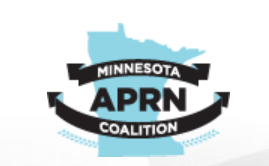Mental Health Care & CNS in MN | U of M lobby's for a National Model

Minnesota needs to move forward with positive change for Mental Health and CNS
From a great article (nursing.umn.edu), some excerpts on our ever changing health care world:
Between 2000 and 2030, the portion of our state’s population age 65 and older is expected to increase 100 percent—from 12 to 24 percent. Members of this age group are also the most frequent users of our state’s health care services, according to the Minnesota Department of Health.
Despite our state's consistently high national rankings for health care, not everyone enjoys consistent access to care. A 2007 report published by the Commonwealth Fund ranked the state a depressing 38th in health care equity. This poor showing was largely the result of health disparities among minority groups, specifically Asian Americans and Native Americans living in urban and rural areas. The disparities in these communities were striking: shorter life spans, poorer general health, and higher incidences of heart disease, diabetes, and cancer.
Rural areas, in particular, are feeling the effects of this population shift. Of those 65 and older, 41 percent live in out-state Minnesota. Add to this the fact that rural communities are experiencing noteworthy growth in minority and immigrant populations, the need for accessible and dependable, primary care becomes clear.“Minnesota consumers are losing out when it comes to health care access and quality,” says Mary Chesney, PhD, RN, CNP, clinical assistant professor at the School of Nursing and chair of the Minnesota APRN Legislative Coalition.
- “As Minnesota’s population ages, we’ll see a dramatic increase in chronic disease burden. Health care reform will also bring a significant increase in primary care demands. That means we need all health providers—including advanced practice registered nurses (APRNs)—to practice at the top of their education to manage our state’s health needs.”
A national model | Getting health care to the next level to meet and fill the demands of the general publics health care
The Coalition is working for adoption of the national APRN consensus model in Minnesota. The model has been endorsed by more than 40 nursing organizations.
It would provide a national baseline for APRN licensure, accreditation, certification, and education. The current process governed by individual state regulations and statutes has created significant barriers for APRNs to practice across the U.S. and has further decreased access to care for patients.
Under the proposed model, APRN scope of practice, including prescriptive privileges, would be regulated by the Board of Nursing—in other words, APRN practice would not require physician supervision.
The goal here is promoting a team approach, needing agreement with other workers, lab techs, pt, OT, etc. Nursing should be monitored by the nursing, not by the medical board.
The model further specifies that all APRNs will be educated, certified, and licensed in one of the four APRN roles and at least one of six population foci: family or individual across the lifespan, adult health and gerontology, neonatology, pediatrics, women’s health and gender-related health, and psychiatric mental health.
Implementation of the model would create a national standard for APRN practice regardless of setting.
Please be concerned with the information presented here, we have huge challenges ahead of us in the health care arena, patients need instrumental change that benefits them.
If you have any questions, comments, concerns, feel free to: 

